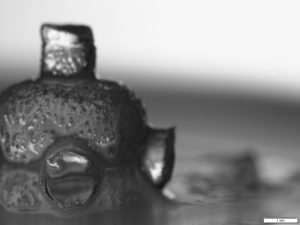Kubra on Twitter, about her poster at #SICB2023!
 ~~~~~~~~~~~~~~~~~~~~~~~~~~~~~~~~~~~~~~~~~~~~~~~~~~~~~~~~~~~~~~~
~~~~~~~~~~~~~~~~~~~~~~~~~~~~~~~~~~~~~~~~~~~~~~~~~~~~~~~~~~~~~~~
We are on Twitter! November 2022
 ~~~~~~~~~~~~~~~~~~~~~~~~~~~~~~~~~~~~~~~~~~~~~~~~~~~~~~~~~~~~~~~~
~~~~~~~~~~~~~~~~~~~~~~~~~~~~~~~~~~~~~~~~~~~~~~~~~~~~~~~~~~~~~~~~
Our new lab sign, featuring a drawing by Ray Yang!
 ~~~~~~~~~~~~~~~~~~~~~~~~~~~~~~~~~~~~~~~~~~~~~~~~~~~~~~~~~~~~~~~~~~~
~~~~~~~~~~~~~~~~~~~~~~~~~~~~~~~~~~~~~~~~~~~~~~~~~~~~~~~~~~~~~~~~~~~
Eleni’s Talk at the Biomedical Engineering Department, New Jersey Institute of Technology, October 2020.
~~~~~~~~~~~~~~~~~~~~~~~~~~~~~~~~~~~~~~~~~~~~~~~~~~~~~~~~~~
Eyeless nematodes navigating mazes give researchers clues into aging process
Our paper on C. elegans‘ learning in mazes at the news feed of Mechanical Engineering Department! Link.
~~~~~~~~~~~~~~~~~~~~~~~~~~~~~~~~~~~~~~~~~~~~~~~~~~~~~~~~~~
2021 Science as Art Faculty Panel & Awards Ceremony
February 2021
Faculty Panel Discussion of Science as Art
Followed by Awards Ceremony
Friday, February 26, 2-3pm via Zoom
Eleni Gourgou, Assistant Research Scientist, Mechanical Engineering
Brad Smith, Associate Dean for Academic Programs; Professor, School of Art & Design; Research Professor, Department of Radiology
Matthew Thompson, Assistant Professor of Music; Associate Faculty, UM Center for Japanese Studies
Moderated by Deb Mexicotte, Managing Director, ArtsEngine
~~~~~~~~~~~~~~~~~~~~~~~~~~~~~~~~~~~~~~~~~~~~~~~~~~~~~~~~~~
UARTS Faculty Engineering/Arts Student Team Project: LuCelegans
October 2020
Dr Eleni Gourgou describes her UARTS FEAST Project – LuCelegans
~~~~~~~~~~~~~~~~~~~~~~~~~~~~~~~~~~~~~~~~~~~~~~~~~~~~~~~~~~
Mr. C. elegans
Audrey, February 2020

Audrey Wu, talented high-school student volunteer in the lab (see People) was feeling creative 🙂 Looks really cool, Audrey!
~~~~~~~~~~~~~~~~~~~~~~~~~~~~~~~~~~~~~~~~~~~~~~~~~~~~~~~~~~~~
WormArt
Steel, April 2019
What did a worm say to the other in a 3D maze?

Steel’s entry for the 1st Midwest WormArt Exhibition and Competition, at the 7th Midwest C. elegans meeting.
~~~~~~~~~~~~~~~~~~~~~~~~~~~~~~~~~~~~~~~~~~~~~~~~~~~~~~~~~~~~
Badfish
Steel, November 2018
As we swim through the vast ocean that is our world, we tend to coagulate around the reefs, centers of commerce and culture that attract all kinds of fish, even the bad ones. Sometimes the water becomes polluted with germs and we find ourselves diving deep to avoid them. Germs have a way of getting on us no matter what and then make us sick in one way or another. I have noticed that there are fish who for one reason or another refuse to let go of their germs, they hold on to them because the germ is familiar, they can use it as an excuse for behaving certain ways or perhaps because they have convinced themselves their germ is actually beneficial some way. All of us have been guilty of this at some point or another, we hang on to a moment from our past when there is no benefit to it. Just like our printing nozzle refused to release the agar that had solidified at the tip which was hindering its ability to print. We had to stop the print and manually remove it before proceeding with our experiments. The nozzle was not able to do it on its own, fish can’t always remove their germs by themselves either, don’t be afraid to ask for help.
~~~~~~~~~~~~~~~~~~~~~~~~~~~~~~~~~~~~~~~~~~~~~~~~~~~~~~~~~~~~
Haiku
Eleni, November 2018
Scope, gene, phenotype
details extend our limits
awe; this life’s secrets
(featured as “haiku of the week” at ArtsAtMichigan, on November 15)
~~~~~~~~~~~~~~~~~~~~~~~~~~~~~~~~~~~~~~~~~~~~~~~~~~~~~~~~~~~~
What does it mean “to see”?
Eleni, October 2018
In the lab lonely hours, one can discover that there are so many things to learn in the lab universe. Lab is a space where a person’s perspective of the world becomes richer and multifaceted, sometimes in unexpected ways. Cool microscopes, fluorescent dyes, funky illuminations, tiny tweezers, precision instruments, all there to expand our capabilities, our dexterities, to further our reach into the natural world, to fortify our senses. This makes one wonder on the definitions we use by default. For example, what does it mean “to see” something? What can you see in the image above? A vintage diver’s helmet? A sea monster? An ice sculpture? Apart from data collection, there is plenty of room for artistic creativity in the lab.
(This is a ~5mm tall dome, made from agar-based hydrogel, the same material our worms grow on. We plan to use similar structures to study C. elegans 3-dimensional behavior.)



